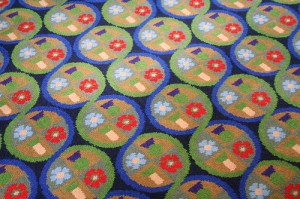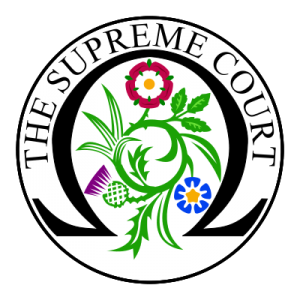Visiting the Supreme Court – Andrew Weston

On Friday morning, a small group of City University Law School First Years was treated to an insightful tour and small Q&A session at Middlesex Guildhall, home to the UK Supreme Court and the Judicial Committee of the Privy Council.
The tour, given by Head of Communications for the Supreme Court Ben Wilson, lead students through the courts origins as the House of Lords, the political and philosophical reasons for its establishment and reform, along with the history and selection of Middlesex Guildhall, its construction and current role in English Law. To end, students were treated to an informal chat with Lord Carnwath.
Originally built as the City Council building for Middlesex in 1913, the building naturally occupies its place in Parliament Square, gracefully representing the Judiciary next to the House of Parliament, the Executive Offices on Whitehall, and Westminster Abbey. However, the building required extensive renovations in order to meet the reforms of the Constitutional Reform Act 2005 and the needs of the new UK Supreme Court. Beginning in 2007 and with considerable input from the current Justices, the courtrooms and concourses were transformed into bright and inviting spaces, striking a near seamless transition from today’s modern requirements and the remarkable original architecture and detail.
Courtroom One, the former city council chambers, is awash in rich old woodwork, ornate carvings, two public viewing galleries, and sun filled stained glass windows. A striking portrait of Lord Bingham, a former Lord Chief Justice and staunch supporter of the 2009 reforms, hangs as to ‘overlook’ the current justices as they sit at their long semi circular desk. Opposite them sit legal counsel, also behind a long semi circular desk. Under their feet lay a carpet (rumored to have been personally selected by Baroness Hale) illustrating an abstract set of four floral emblems, one for each of England, Wales, Ireland and Scotland. Intentionally, members of council and the Justices all sit on the same level, as to promote conversation. The courtrooms are also all equipped with audio and visual equipment used to live-stream cases on YouTube and several TV networks.
After the tour, Lord Carnwath greeted students in the courtroom for the Judicial Committee of the Privy Council, outlining his legal and professional background, and path to appointment to the Supreme Court.
Among the topics addressed by the Lord in his conversation with students; the Courts recent decision to go into secret session; the legal ramifications of repealing the Human Rights Act and unwinding its history from the current legal status; the accessibility and recording of common law in the 21st century; and the challenges to interpreting cases heard by the Privy Counsel from other commonwealth countries.
I would highly encourage even the most casual legal observer to visit Middlesex Guildhall for himself or herself.
The building itself is exceptionally accessible with the public allowed inside anytime during Monday-Friday regular business hours and all cases open to public viewing and streamed live on their Youtube Channel. Additionally, the lower level houses a small but insightful museum dedicated to everything about UK Supreme Court and its predecessor.
A very special thanks to…
Dr Stanton for organizing the tour.
Head of Communications Ben Wilson for his enthusiastic and knowledgeable tour
Lord Carnwath for taking the time to chat with us.
Written by Andrew Weston, LLB1 student at The City Law School – many thanks Andrew!

